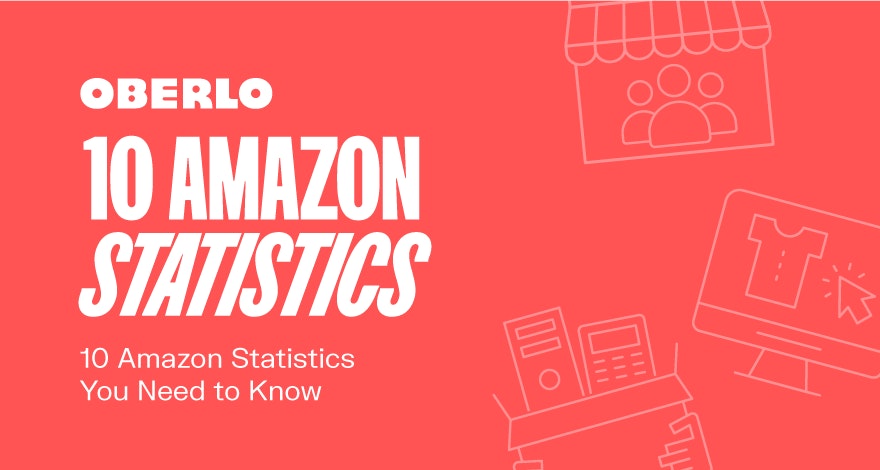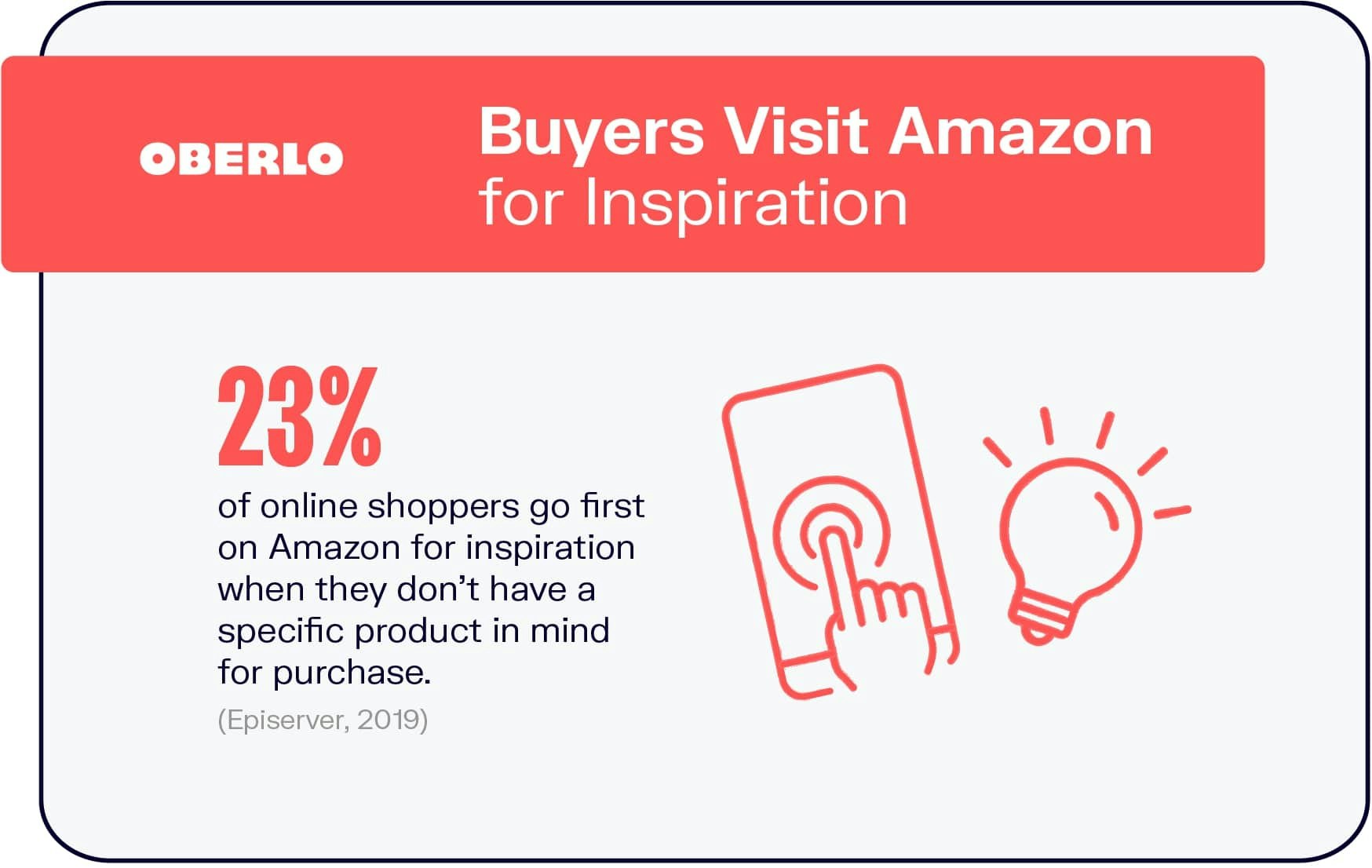The year was 1994 when Bezos quit his job and launched Amazon out of his garage. In 1995, the first item was ordered online on Amazon – a book. In the first month of its launch, Amazon had already sold books to people in all 50 states and in 45 different countries. Within 30 days, it had generated $20,000 per week in sales.
In the 25 years since Amazon was launched, it holds the title as the world’s largest online retailer and has become a household name.
Amazon has become synonymous with online shopping. And it continues to grow by developing new products, acquisitions, and various different service offerings that continue to enlarge its customer base. Amazon has broadened its target market to try to cover as many customers as possible. And it’s doing a great job, because there seems to be something for everyone on Amazon. As online shopping becomes increasingly popular, people turn to Amazon for just about everything, whether that’s everyday groceries or seasonal gifts.
So if you’re looking for ideas to sell on Amazon, or you need some inspiration to build your own ecommerce store, check out our Amazon guide that can teach you step by step tactics of how you can get sales on Amazon.
Here are the top 10 Amazon Statistics that you need to know about in 2021.
Post Contents
- 1. The Popularity of Amazon
- 2. Customers Trust Amazon
- 3. Number of Amazon Prime Members
- 4. Amazon Revenue
- 5. The Most Popular Amazon Product Category
- 6. Most Important Factors Driving Purchasing Decisions on Amazon
- 7. Amazon Usage by Device
- 8. Number of Items Sold on Amazon per Minute
- 9. Number of Sellers on Amazon
- 10. Buyers Visit Amazon for Inspiration
- Summary: Amazon Statistics 2020
- Want to Learn More?

Don’t wait for someone else to do it. Hire yourself and start calling the shots.
Get Started Free1. The Popularity of Amazon
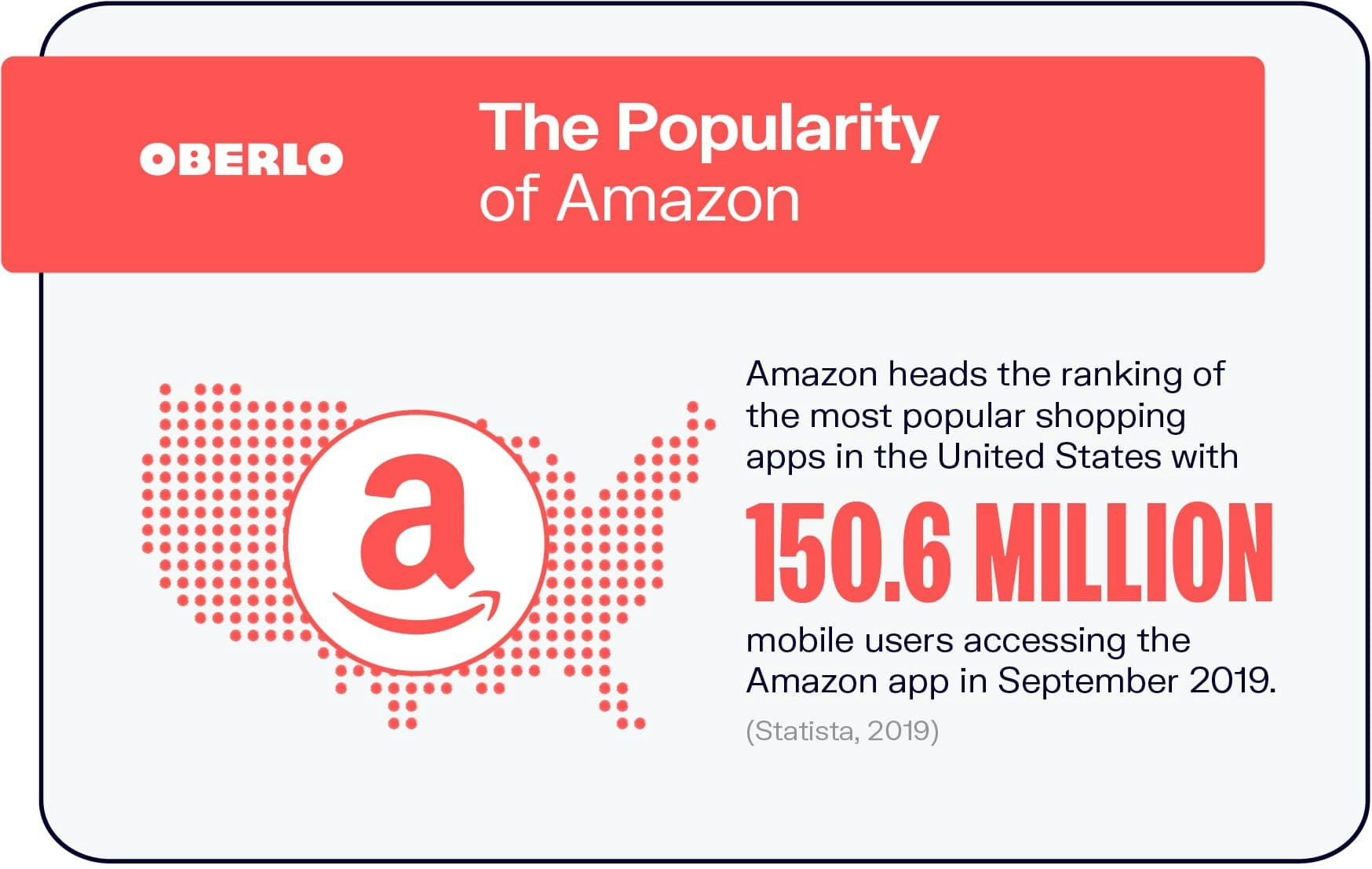
The popularity of Amazon is indisputable. Amazon leads the ranking of the most popular shopping apps in the United States. 150.6 million mobile users accessed the Amazon app in September 2019 (Statista, 2019). It’s also interesting to note that Amazon is way ahead of its competition. The second-ranking shopping app, Walmart, had a monthly mobile app audience of only 76.45 million users.
Mobile shopping is becoming increasingly popular among the online population. This could be because of the seamless experience that shopping apps are committed to providing their customers. It’s becoming so simple and stress-free to shop online. This also adds to the fact that customers can purchase their favorite products on-the-go. They don’t need to be in front of a desktop computer to be shopping online. To give credit to Amazon, it has revolutionized online shopping for customers. It has made the shopping experience incredibly smooth. You can order just about anything on Amazon. And another factor that weighs in favor of Amazon is that it has built a strong relationship with their customers. But more on that later.
Keeping all these things in mind, it comes as little surprise that Amazon also ranks first overall among the most-visited mobile retail properties in the United States. In September 2018, more than 63 million users accessed Amazon Sites exclusively through their mobile devices, making the platform the most popular among mobile-only online visitors.
2. Customers Trust Amazon
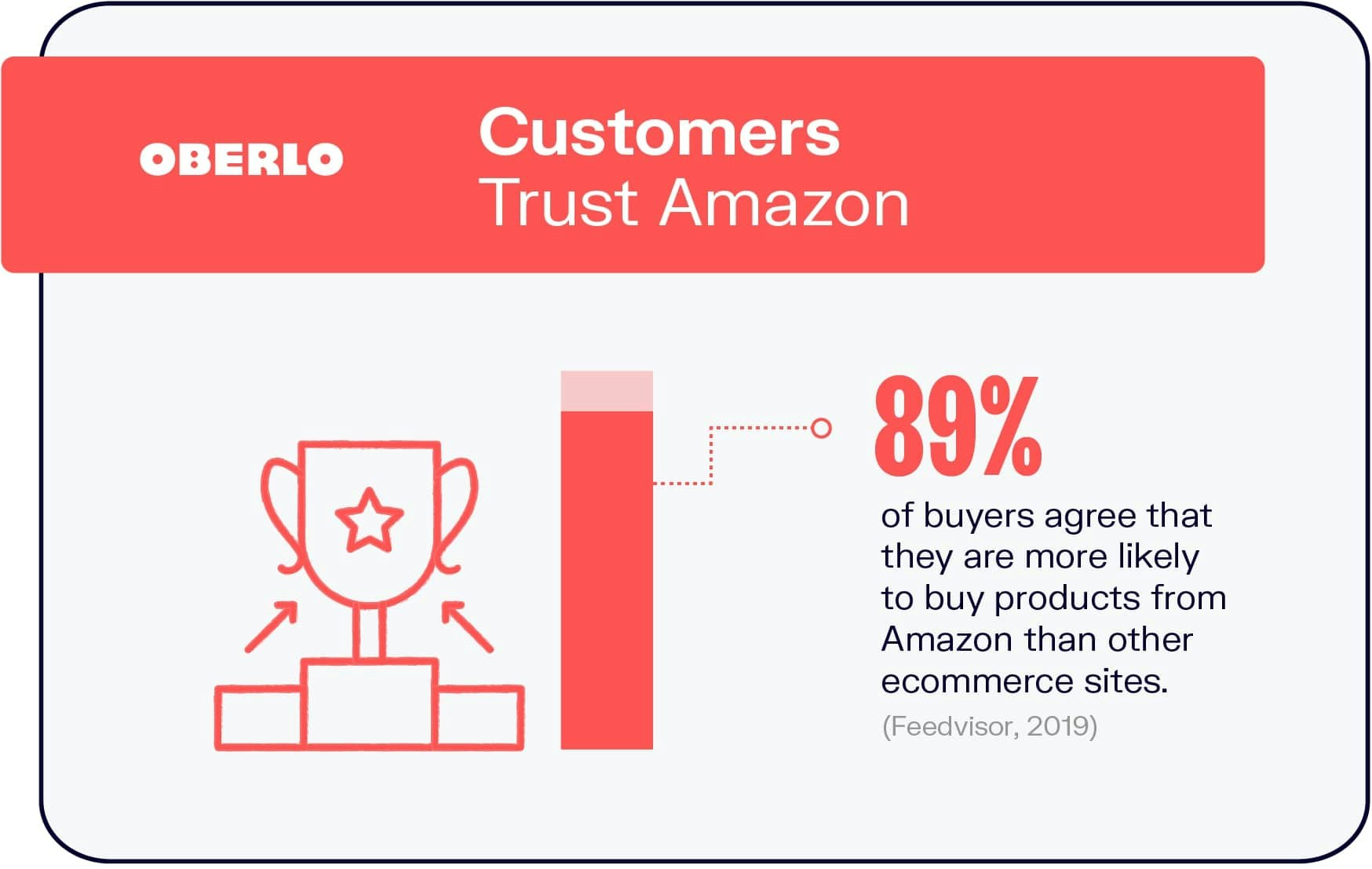
Customers trust Amazon. And for good reason. Based on a survey of more than 2000+ US customers, 89 percent of buyers agree that they’re more likely to buy products from Amazon than other ecommerce sites (Feedvisor, 2019). There’s no denying the Amazon is at the centre of ecommerce. This point particularly held true for customers who purchase products online regularly. 98 percent of those who purchase on Amazon daily or almost everyday and 99 percent who purchase on Amazon a few times a week agree that they are drawn to Amazon over its competitors. Amazon is committed to providing a consistently reliable online shopping experience for consumers. In a way, customers know exactly what they’re getting into.
Gaining customer trust is a stepping stone toward becoming successful as a company or brand. The trust that Amazon has built with its customers is based on consistent and transparent product experiences. Forbes has famously said, “Amazon has earned our trust by delivering the products we want, on time, intact, in the same branded brown boxes—consistently.”
So, if you have a brand or business, you should be thinking about developing customer relationships. Customer relationships will help you win more shoppers. In the age of online shopping, by focusing on truthful and clear product information online you can deliver a consistent experience to your customers. Brands should focus on building trust with their audience by providing them the right content, encouraging reviews, and providing high-quality customer service, which will help customers trust your brand in the long run.
If you want to learn how to sell on Amazon, check out this guide.
3. Number of Amazon Prime Members
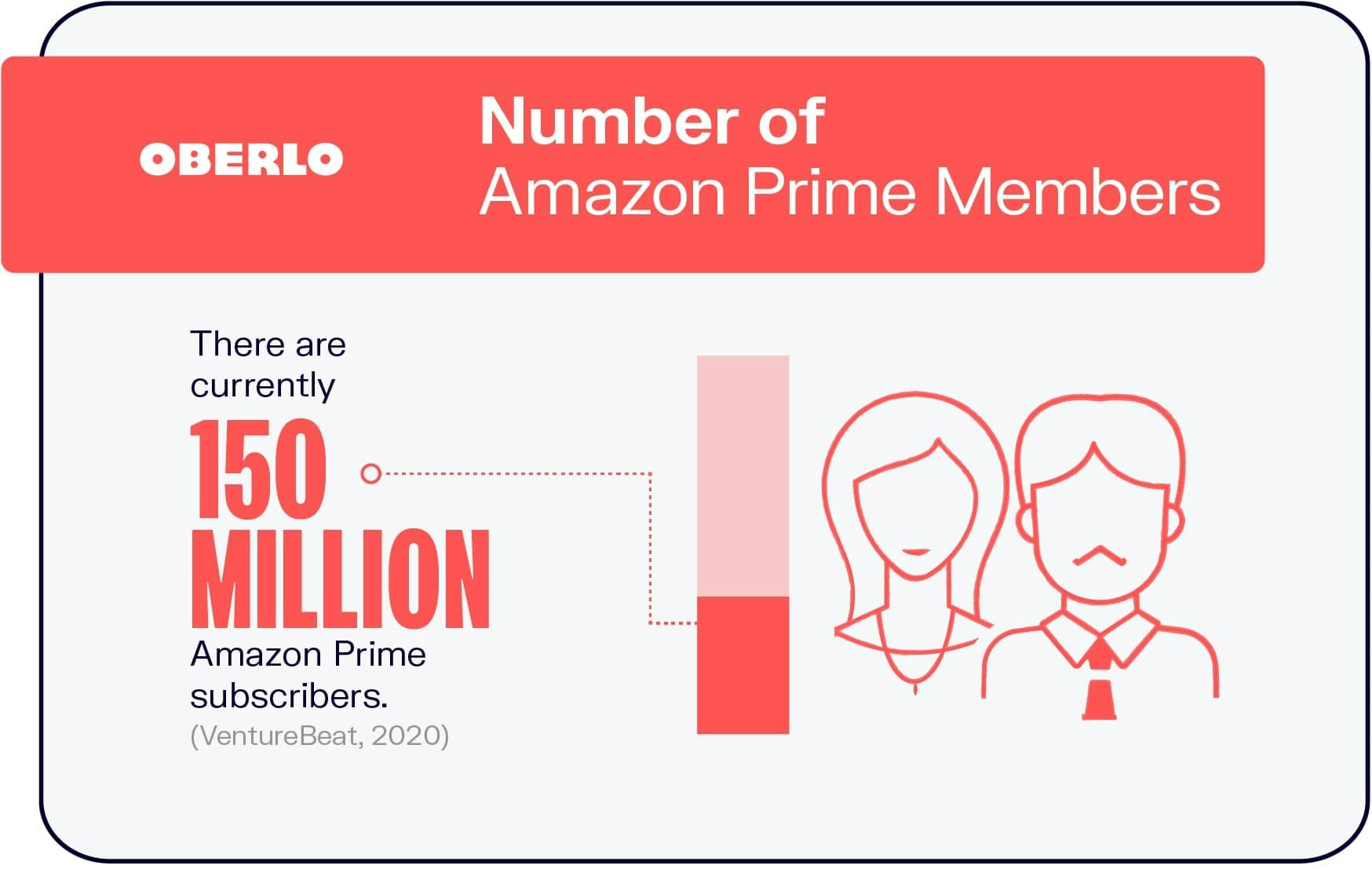
Amazon’s Prime membership program continues to reach an increasing number of online shoppers. There are currently 150 million Prime subscribers, a 50 percent increase from 100 million in April 2018 (VentureBeat, 2020).
Amazon Prime is a paid subscription service offered by Amazon. The program was launched in 2005 and is available internationally. The subscription includes services such as free two-day (or faster) shipping, music and video streaming, and many other benefits.
The most popular shopping categories among Amazon Prime shoppers in the US are electronics, apparel, and home and kitchen goods.
Amazon Prime shoppers are more engaged than non-members. In a February 2019 survey, 20 percent of Amazon Prime members said they shopped on Amazon a few times per week, with seven percent saying that they did so on an (almost) daily basis.
Amazon frequently added more features to the Amazon Prime subscription. Just recently, the company extended Prime benefits to include free delivery when purchasing from Amazon Fresh, which would otherwise cost $14.99 per month. For regular online shoppers, the benefits of Amazon Prime are undeniable.
4. Amazon Revenue
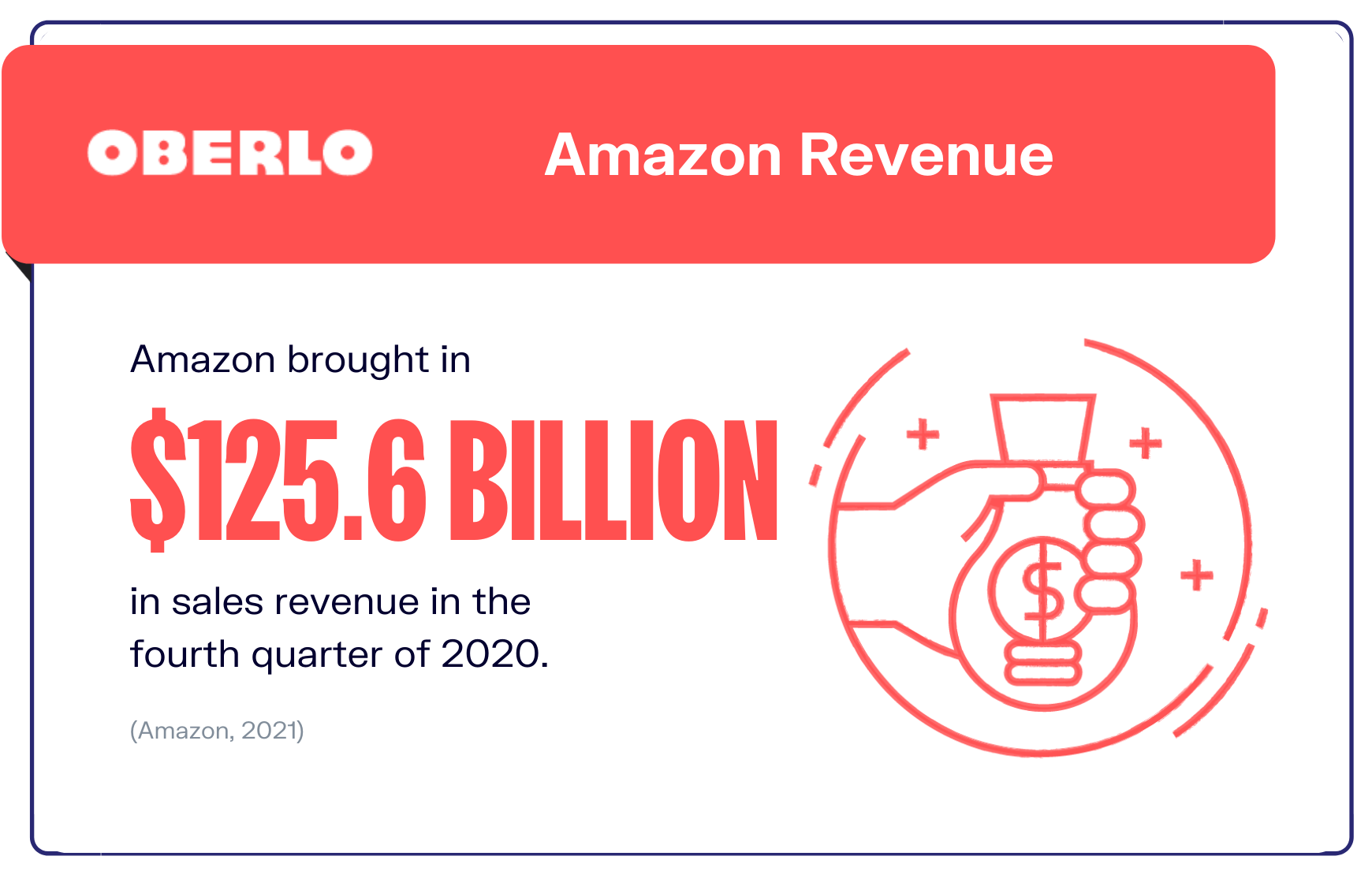
As global ecommerce sales continue to grow, it should come as no surprise that as the top ecommerce company in the world, Amazon’s revenues reflect similar growth.
The latest fiscal numbers from Amazon show that the company made $125.6 billion in sales revenue in the fourth quarter of 2020 (Amazon, 2021). This marks an impressive 44 percent year-over-year increase.
Of Amazon’s Q4 2020 revenue, net income constitutes $7.2 billion, more than double the previous year’s figures.
The bulk of Amazon’s sales continues to come from North America. Sales from the region totaled $75.3 billion (a 40 percent annual increase), compared to the $37.5 billion the company generated from international sales.
Looking ahead, the company is estimating increased sales for the first quarter of 2021. It has forecast a year-over-year growth of between 33 percent and 40 percent to hit between $100 billion and $106 billion in net sales.
5. The Most Popular Amazon Product Category
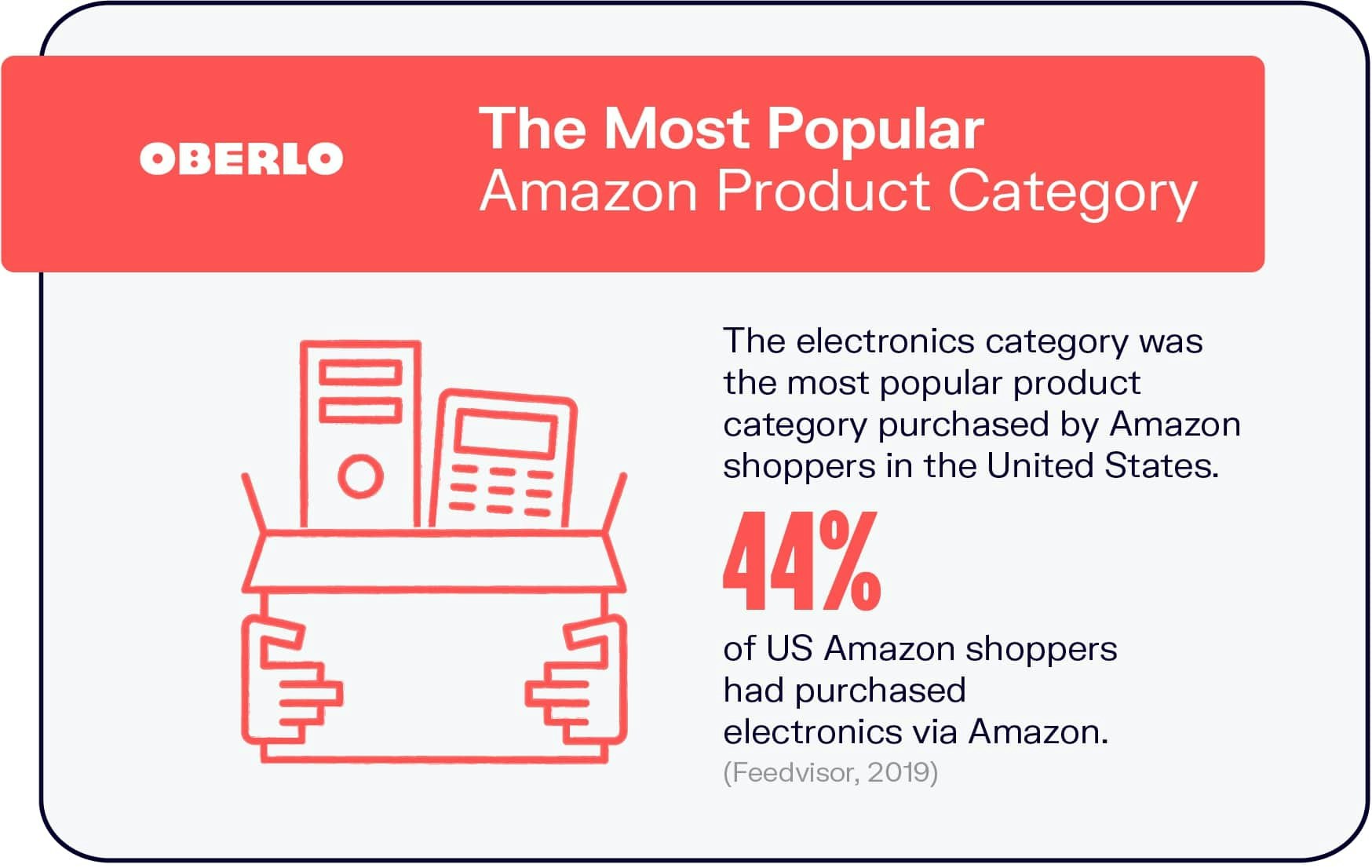
Out of all the product categories, the electronics category was the most popular product category purchased by Amazon shoppers in the United States. 44 percent of US Amazon shoppers have purchased electronics via Amazon (Feedvisor, 2019). That was followed closely by clothing, shoes, and jewelry at 43 percent, and home and kitchen products at 39 percent.
Amazon is constantly working on increasing its product and category coverage on the platform. This means that it’s also growing to attract new types of customers and various different niches. The diverse range of products offered by Amazon is one of its core strengths that helps it to highlight itself prominently among competition, and also why so many other companies face difficulty to reach the same level of success. Expanding its categories also means that it’s becoming accessible to new audiences and constantly expanding its target market, to reach as many individuals as possible. But it does all this, while at the same time maintaining quality standards which builds trust.
6. Most Important Factors Driving Purchasing Decisions on Amazon
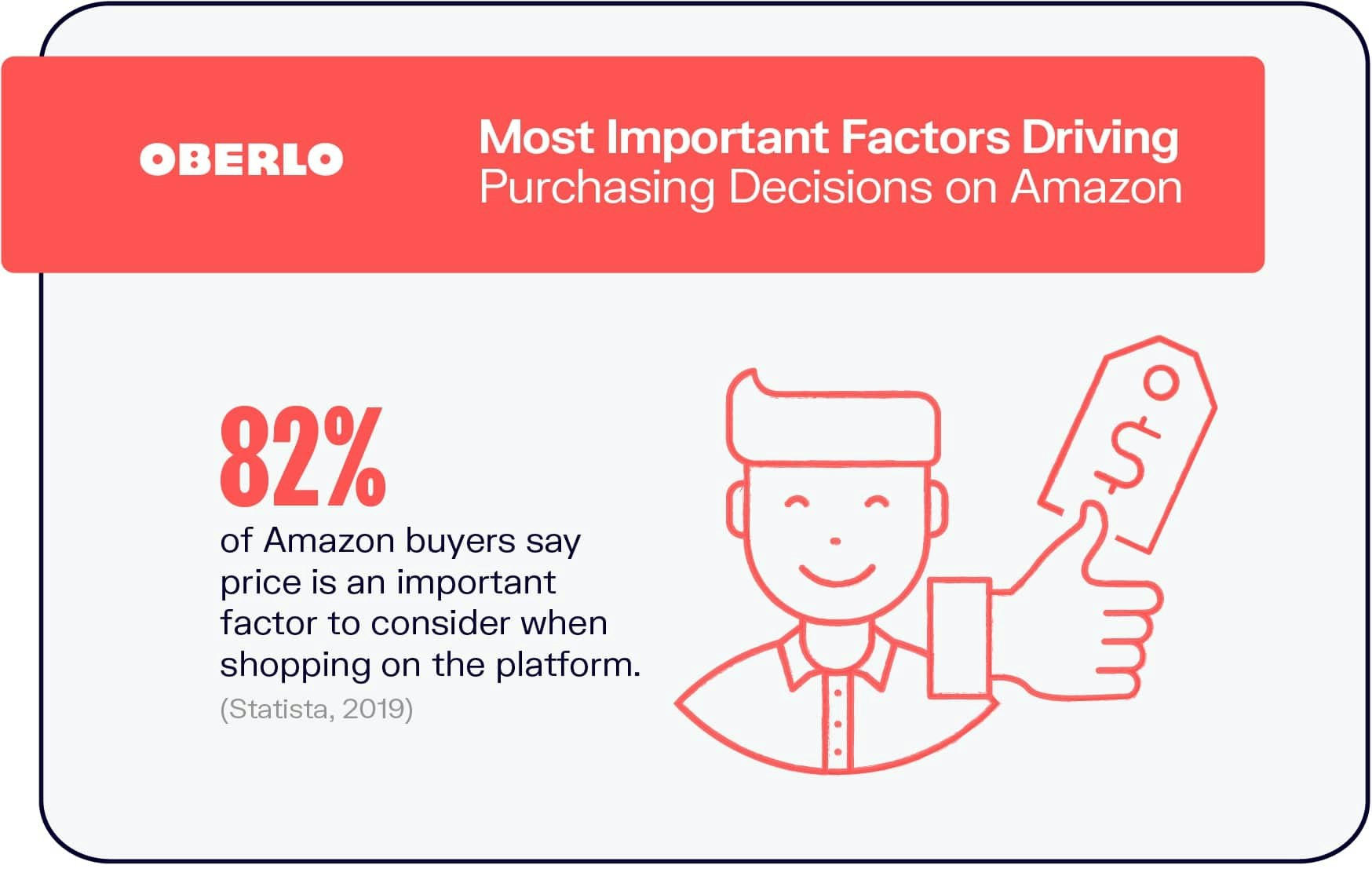
It’s clear that consumers love shopping on Amazon. But what is it that drives their purchasing decisions when browsing on the ecommerce platform?
Survey results show that price is the leading factor of purchases on Amazon, with 82 percent of Amazon buyers listing it as an important shopping consideration (Statista, 2019).
This is followed by low shipping costs and positive product reviews, which are considered to be key factors by 70 percent and 57 percent of Amazon buyers respectively.
Many of them also enjoy the flexibility offered in returning products and the quick shopping time that Amazon offers. Just under half of all Amazon buyers say these are important factors to think about when online shopping on Amazon.
Though Amazon’s Prime program is booming, it’s far from being a deal-breaker for shoppers who are deciding between products, with just over one-third (35 percent) of them saying Prime eligibility is a key factor they consider.
7. Amazon Usage by Device
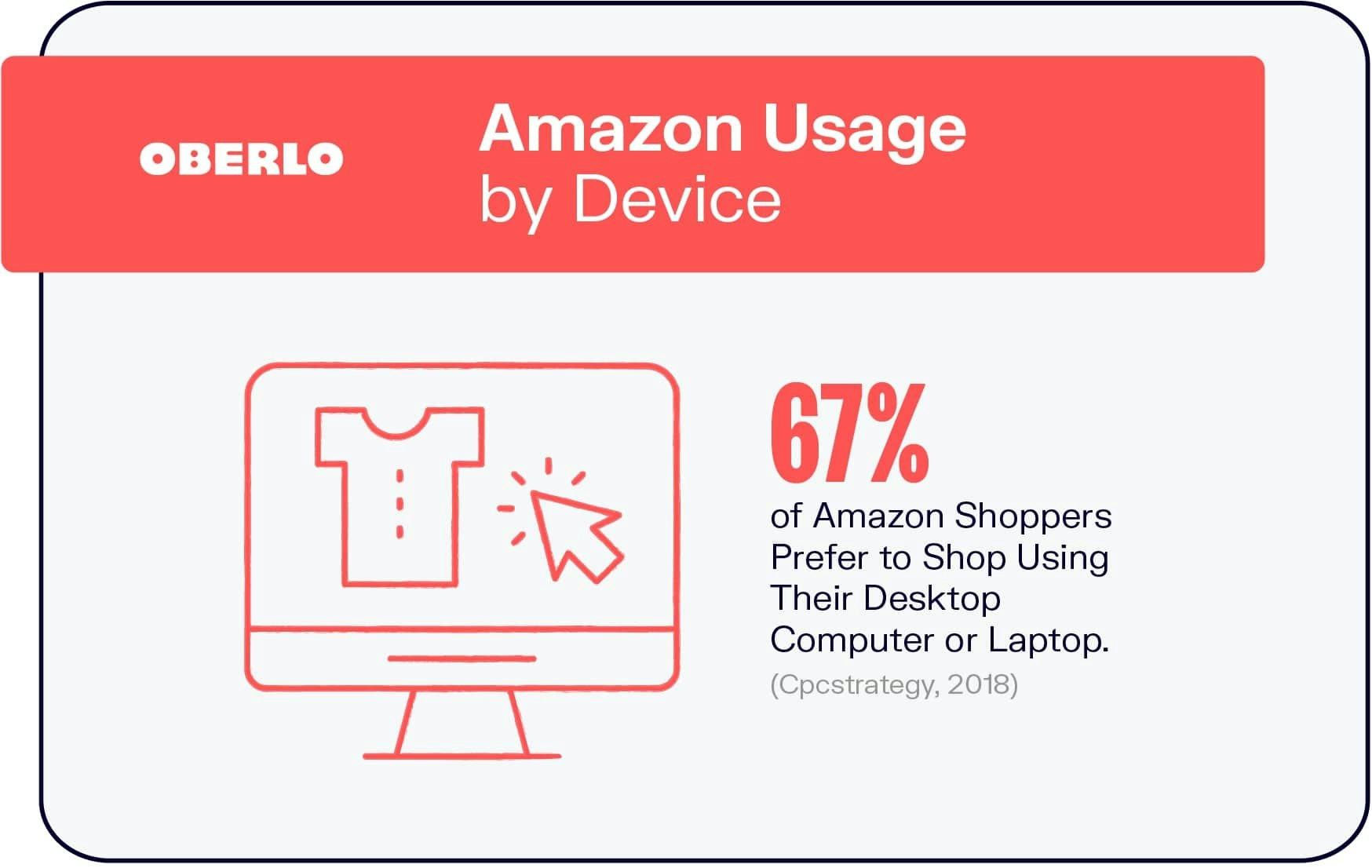
Even though the tech world is increasingly adapting to mobile first, online shoppers using Amazon still prefer desktop over mobile when they’re making a purchase. 67 percent of Amazon Shoppers prefer to shop using their desktop computer or laptop (CPC Strategy, 2018). In comparison, 24 percent of shoppers preferred to shop using mobile devices. This statistic shows us the types of devices used by online shoppers in the United States when shopping on Amazon. Amazon Echo (voice-enabled device) had the lowest reported usage rate. But the real question remains as to why this is the case? And what could this Amazon stat tell us about the future of online shopping?
To begin with, there’s a difference in the device preference when it comes to different age groups. Those that are 35 and younger have a clear preference of mobile devices, whereas online shoppers of 55 and over preferred to use desktop or laptop devices. Another thing to note here is that this statistic points out device usage based on purchase action. This may not seem like a noticeable difference at first, but other studies have shown that shoppers are more likely to browse on mobile and buy on desktop. So, when it comes to the future of online shopping, mobile will continue to be an important step in Amazon’s buyer journey, helping shoppers smoothly transition from the browse to buy stage. Additionally, current investments in AR (Augmented Reality) and app updates that are catered toward faster purchases (such as swipe-to-buy) is a hint in the direction of ease for the online shopper.
8. Number of Items Sold on Amazon per Minute
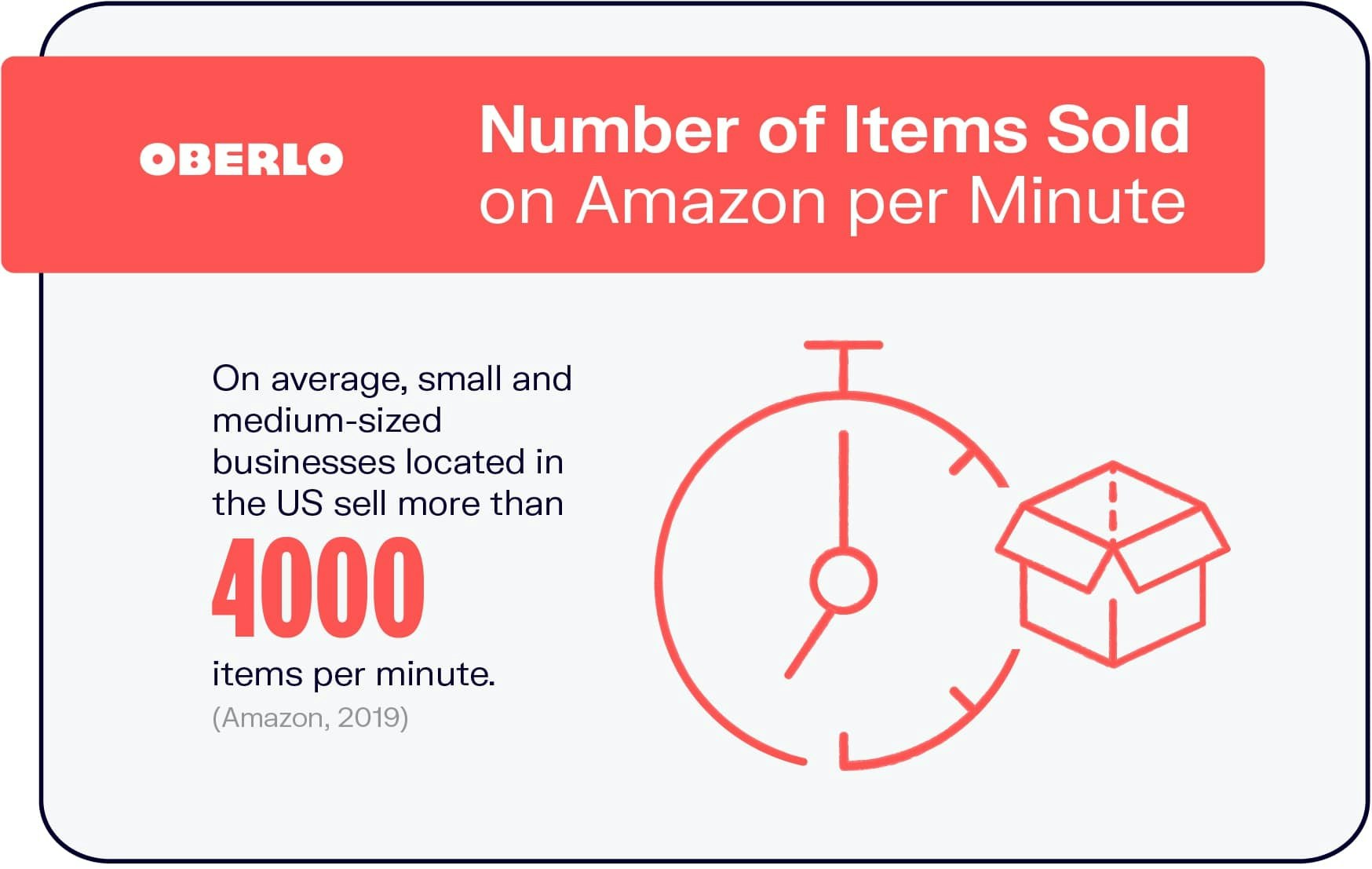
Millions of SMBs (small and medium sized businesses) from around the world are working with Amazon. And this next statistic shows us why. On average, SMBs located in the US sell more than 4000 items per minute (Amazon, 2019). It’s interesting to note that more than half of the items sold on Amazon’s stores worldwide are from SMBs. That’s just one measure of the success that SMBs are achieving by working with Amazon.
It’s safe to say that Amazon offers a huge opportunity for SMBs to flourish. SMBs selling through Amazon’s stores have created an estimated 1.6 million jobs worldwide. In order to encourage and help SMBs thrive in Amazon stores, Amazon also hosts a variety of events to educate sellers. This includes the Amazon Academy events across Europe, the Boost Conference specifically for businesses using the FBA service, and the new Selling Partner Summits across the US. The new Selling Partner Summits are a series of six conferences designed to help sellers grow their business in Amazon’s stores.
9. Number of Sellers on Amazon
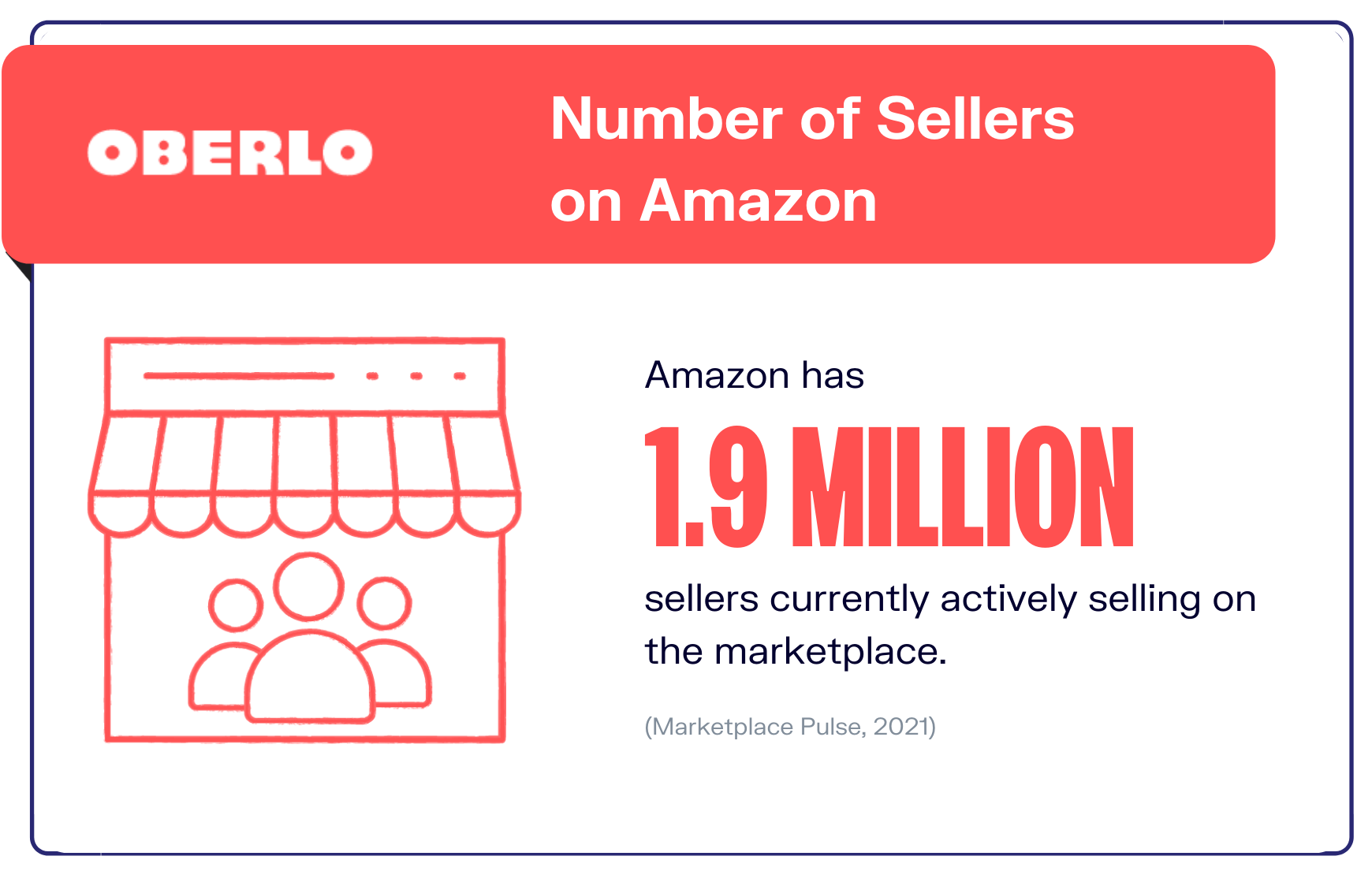
Amazon has 9.7 million sellers worldwide, of which 1.9 million are actively selling on the marketplace (Marketplace Pulse, 2021).
The number of sellers on Amazon is growing. In fact, every year, more than a million new sellers join Amazon. In the first quarter of 2021 alone, as many as 283,000 sellers signed up to sell on the marketplace. Should this pace continue, Amazon can expect to have 1.4 million new sellers this year.
The majority of these new sellers (25.6 percent so far) have signed up to sell on Amazon.com. This is followed by Amazon.in, host to 10.2 percent of new Amazon sellers.
Seller competition on Amazon is fierce. Despite the large number of sellers on Amazon, a big portion of its total sales is generated by only a tiny fraction of its sellers. Fewer than one in ten active Amazon sellers were able to generate over $100,000 in annual sales, and just one percent of them hit the $1 million sales mark.
10. Buyers Visit Amazon for Inspiration
23 percent of online shoppers go first on Amazon for inspiration when they don’t have a specific product in mind for purchase (Episerver, 2019).
Understanding the customer’s journey map helps online brand and retailers develop their strategy accordingly. If online retailers know that a big chunk of people are going online for inspiration when they don’t yet have a specific product in mind for purchase, they have the potential to influence the buyers. Marketplaces such as Amazon or Etsy remain a popular first touchpoint for online shoppers without a product in mind for purchase. Other than that, Google is also a top destination for shoppers beginning an online purchase.
But the fact that shoppers tend to lean toward Amazon and Google when doing searching online may scare brands and retailers. But companies can work alongside these trends to favor themselves. It’s important to highlight pricing and product features, but brands shouldn’t limit themselves to just that. They should try to inspire online shoppers to purchase with information that can be valuable to them. This can include customized messages to shoppers. Companies can adopt content marketing approaches that cater to a shopper’s unique state of mind based on their frequency of online shopping. For example, companies can reach out to online buyers with unique promotions like an exclusive sale offering based on the location of the shopper. This is something that clothing brands frequently engage in to attract their customers by offering them sales based on the weather of the online shopper.
Conclusion
After taking a look at these Amazon statistics, it’s safe to say that Amazon is here to stay. It’s a platform that’s full of opportunities for sellers from every industry. Take these Amazon statistics to develop a comprehensive understanding of the platform to have the tools necessary to maximize your presence on the Amazon marketplace in the coming years.

Summary: Amazon Statistics
- Amazon is the most popular shopping app in the United States. It had 150.6 million mobile users accessing the Amazon app in September 2019 (Statista, 2019).
- Customers trust Amazon. 89 percent of buyers agree that they are more likely to buy products from Amazon than other ecommerce sites (Feedvisor, 2019).
- There are currently 150 million Amazon Prime subscribers (VentureBeat, 2020).
- Amazon brought in $125.6 billion in sales revenue in the fourth quarter of 2020 (Amazon, 2021).
- The electronics category was the most popular product category purchased by Amazon shoppers in the United States. 44 percent of US Amazon shoppers had purchased electronics via Amazon (Feedvisor, 2019).
- 82 percent of Amazon buyers say price is an important factor to consider when shopping on the platform (Statista, 2019).
- 67 percent of Amazon Shoppers prefer to shop using their desktop computer or laptop (Cpcstrategy, 2018).
- On average, small and medium sized businesses (SMBs) located in the US sell more than 4000 items per minute (Amazon, 2019).
- Amazon has 1.9 million sellers actively selling on the marketplace (Marketplace Pulse, 2021).
- 23 percent of online shoppers go first on Amazon for inspiration when they don’t have a specific product in mind for purchase (Episerver, 2019).
Want to Learn More?
- What is ePacket? Everything You Need to Know About Shipping, Delivery, and Tracking
- Want to Make Money Online? Here Are 11 Real Ways to Earn Money From Home
- Ecommerce SEO: 8 Tips to Help Your Online Store Rank Better
- How to Make Money on YouTube in 2021: 5 Top Tips
- Product Description: 8 Tips to Write an Epic One in 2021
Is there anything else you’d like to know about Amazon statistics and wish was included in this article? Let us know in the comments below!

